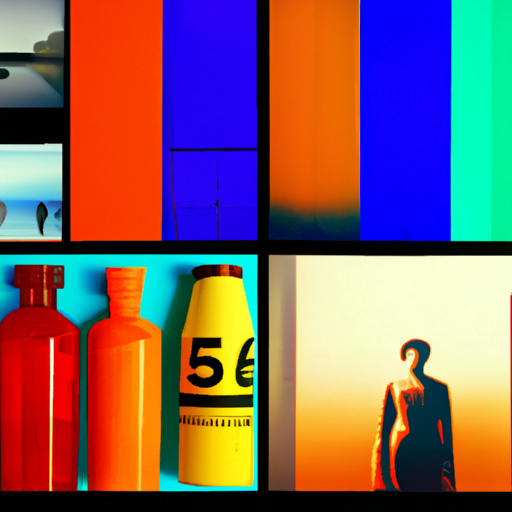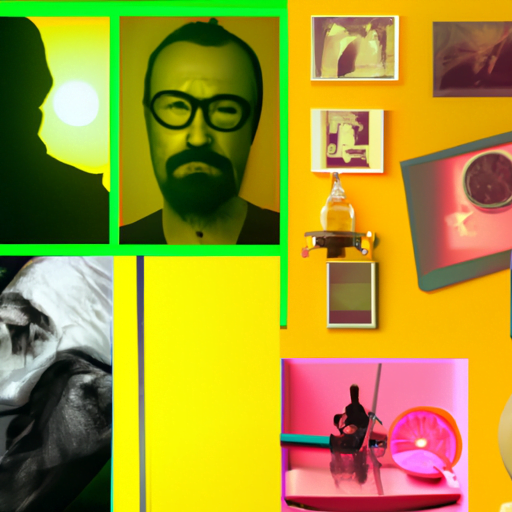
-
Table of Contents
The Aesthetics of Chaos: The Beauty of Collage Art

Collage art is a unique form of artistic expression that has gained popularity in recent years. It involves the combination of different materials, such as photographs, newspaper clippings, and found objects, to create a new visual composition. The result is often a chaotic and fragmented image that challenges traditional notions of beauty. In this article, we will explore the aesthetics of chaos in collage art and discuss why it is considered beautiful.
The Origins of Collage Art
Collage art has its roots in the early 20th century, with artists such as Pablo Picasso and Georges Braque experimenting with the technique. They were inspired by the Cubist movement, which sought to depict objects from multiple perspectives simultaneously. Picasso and Braque began incorporating different materials into their paintings, such as newspaper clippings and pieces of fabric, to create a sense of depth and texture.
Over time, collage art evolved and became a distinct art form in its own right. Artists like Kurt Schwitters and Hannah Höch embraced the medium and pushed its boundaries. Schwitters, in particular, is known for his use of found objects and everyday materials in his collages, creating compositions that were both visually striking and conceptually rich.
The Beauty of Chaos
One of the defining characteristics of collage art is its chaotic nature. Unlike traditional forms of art that strive for harmony and balance, collage art embraces disorder and fragmentation. This chaos can be seen as a reflection of the world we live in, where information is constantly bombarding us from all directions.
Collage art captures the essence of this information overload by combining disparate elements into a single composition. The resulting image is often visually stimulating and thought-provoking. It challenges the viewer to make sense of the chaos and find meaning in the juxtaposition of different materials.
Case Study: Hannah Höch
Hannah Höch was a German artist who is considered one of the pioneers of collage art. Her work often explored themes of gender, identity, and the role of women in society. Höch’s collages were characterized by their fragmented and surreal nature.
One of her most famous works, “Cut with the Kitchen Knife Dada through the Last Weimar Beer-Belly Cultural Epoch in Germany,” is a prime example of the beauty of chaos in collage art. The piece is a sprawling composition that combines photographs, newspaper clippings, and handwritten text. It depicts a chaotic and fragmented vision of German society during the Weimar Republic.
By embracing chaos in her collages, Höch was able to convey the tumultuous and uncertain nature of the time period. The fragmented images and overlapping text create a sense of disorientation and confusion, mirroring the political and social upheaval of the era.
The Power of Juxtaposition
One of the key elements of collage art is the juxtaposition of different materials. By combining unrelated images and objects, artists can create new meanings and associations. This juxtaposition can be both visually striking and intellectually stimulating.
For example, in the work of American artist Romare Bearden, the juxtaposition of photographs and painted elements creates a dynamic and layered composition. Bearden often incorporated images from popular culture, such as jazz musicians and African American figures, into his collages. By placing these images alongside abstract shapes and patterns, he was able to explore themes of identity and cultural heritage.
The power of juxtaposition lies in its ability to challenge our preconceived notions and create new connections. It forces us to look beyond the surface and consider the deeper meanings and implications of the images we see.
The Emotional Impact
Collage art has a unique ability to evoke strong emotions in the viewer. The chaotic and fragmented nature of the compositions can elicit feelings of excitement, confusion, and even discomfort. This emotional impact is a testament to the power of collage art as a form of expression.
By breaking down traditional boundaries and embracing chaos, collage artists are able to tap into the subconscious and evoke a visceral response. The viewer is forced to confront their own emotions and make sense of the conflicting elements within the composition.
Case Study: Kurt Schwitters
Kurt Schwitters was a German artist known for his pioneering work in collage and assemblage. His collages often featured found objects and materials, such as bus tickets, newspaper clippings, and scraps of fabric. Schwitters’ compositions were characterized by their chaotic and abstract nature.
One of his most famous works, “Merz Picture 32A,” is a prime example of the emotional impact of collage art. The piece is a dense and layered composition that combines various materials and textures. The chaotic arrangement of the elements creates a sense of energy and movement, drawing the viewer into the artwork.
By embracing chaos in his collages, Schwitters was able to convey a sense of urgency and emotion. The fragmented and abstract nature of his compositions allowed for multiple interpretations and invited the viewer to engage with the artwork on a deeper level.
Conclusion
Collage art is a powerful and expressive form of artistic expression. Its chaotic and fragmented nature challenges traditional notions of beauty and invites the viewer to make sense of the chaos. Through the juxtaposition of different materials and the emotional impact of the compositions, collage artists are able to create visually striking and thought-provoking artworks.
By embracing chaos, collage art reflects the complexity of the world we live in and encourages us to question our own perceptions and assumptions. It reminds us that beauty can be found in unexpected places and that there is value in embracing the chaos and fragmentation of life.
